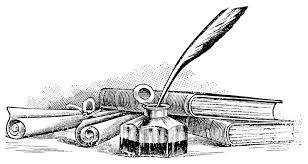兩種標點符號: “‐” 和 “—”
在英語的標點符號(punctuations)中,有一組符號常為使用者混
淆:“‐”和“—”,現在請讀者判斷此兩符號的英文名稱,
請選擇:
A. ‐: dash —: hyphen
B. —: dash ‐: hyphen

現在答案揭曉,我們的選擇是B。您答對了嗎?就筆者的經驗,
有七成以上的英語學習者會答錯!事實上長度較短的hyphen是
所謂的連字號,而較長的dash是所謂的破折號,兩者名稱不同,
功能也不同:
1. Hyphen “‐”
此符號恰如其名稱,用於連接字詞,數量不限,但一般以二或三字
為多,而被連接的字詞視為一個整體,是所謂的複合字
“compound word”,如:
a. It is mission impossible to make my four-year-old cousin sit still.
b. This model is equipped with state-of-the-art technology.
c. The one-legged veteran walked into the diner with a dog.
註:state-of-the-art (adj.) 最先進的
三個例句都用了hyphen串連的複合形容詞。
2. Dash “—”
而破折號不能用來連接字詞,它的功能主要是提供補充的資訊,
與原句的要旨有可能是正相關或負相關的關聯,使用位置不限,
在句中或靠近句末皆可,如:
a. The result is different from our expectation―our rival team won
the game!
b. Mr. Simons―our new supervisor―is so pushy and often loses
his temper; I honestly don’t think he is an ideal leader.
(若使用在句中需要一對破折號)
c. Since Mario dropped out in the last minute, now we have only one
candidate for the task―Suzuki Morrison.
註:rival (adj.) 敵對的;pushy (adj.) 蠻橫的(口語用法);drop out (phr.) 退出
另外請注意dash多半是使用於非正式或口語化的表達中如小說或
新聞報導,它在正式的寫作裡常為“:”或“()”取代。
—版權所有,非經同意請勿任意轉載或重製—
限會員,要發表迴響,請先登入


